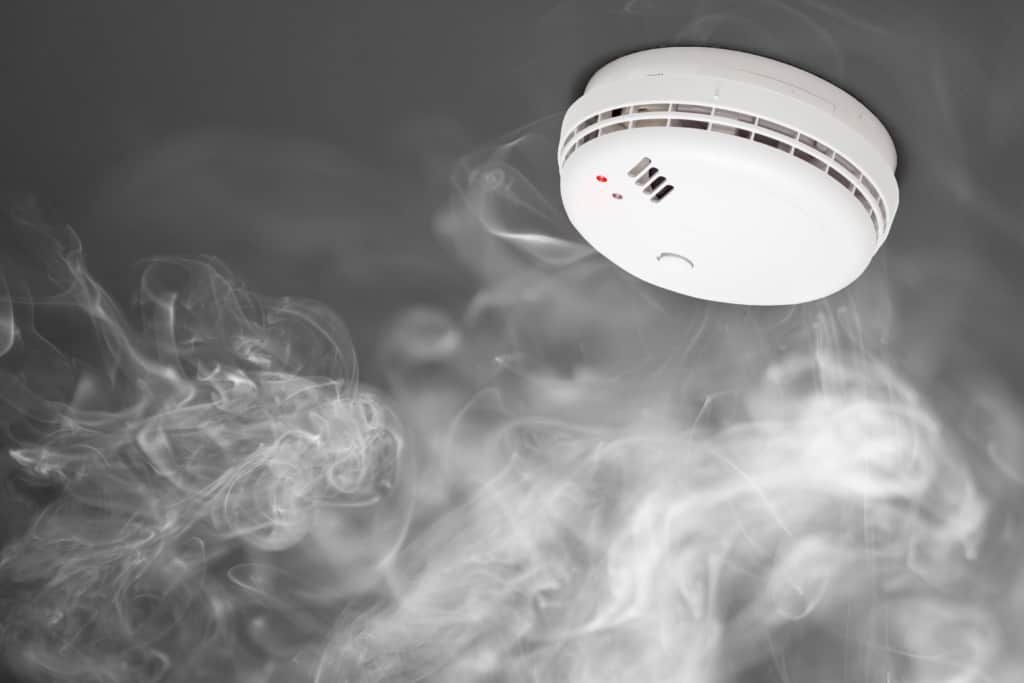SMOKE ALARM SAFETY
SHARE
Did you know that most home fire deaths happen when people are asleep between 11 p.m. and 7 a.m.? Don’t let this happen to you. Keep your family safe by installing smoke alarms and testing them monthly to make sure they work.
Smoke Alarms and Fire Safety – Did You Know?
- Three out of five home fire deaths result from fires in properties without working smoke alarms.
- More than one-third (38 percent) of home fire deaths result from fires in which no smoke alarms are present.
- The risk of dying in a home fire is cut in half in homes with working smoke alarms.
Smoke Alarm FAQs
-
What types of smoke alarms can I buy?
There are many brands of smoke alarms on the market, but they fall under two basic types: ionization and photoelectric. Ionization and photoelectric smoke alarms detect different types of fires. Since no one can predict what type of fire might start in their home, the USFA recommends that every home and place where people sleep have:
- Both ionization AND photoelectric smoke alarms. OR
- Dual-sensor smoke alarms, which contain both ionization and photoelectric smoke sensors.
Choose interconnected smoke alarms, so when one sounds, they all sound. There are also alarms for people with hearing loss. These alarms may have strobe lights that flash and/or vibrate to alert those who are unable to hear standard smoke alarms when they sound.
-
Are smoke alarms expensive?
Smoke alarms are not expensive and are worth the lives they can help save.
Alarm type and cost
- Ionization and photoelectric: $6 and up
- Dual sensor: $24 and up
- Smoke alarms with a microprocessor (faster to alert, fewer false alarms): $30 and up
- Radio frequency/wireless (communicate from one to the next without wires): $40 and up
Your city, county, or state may require a specific type of alarm. Please check with your local fire marshal for information on what type of alarm you need. Some fire departments offer reduced-price, or even free, smoke alarms. Contact your local fire department’s non-emergency phone number for more information.
-
What powers a smoke alarm?
Smoke alarms are powered by a battery or by your home’s electrical system. If the smoke alarm is powered by a battery, it runs on either a disposable nine-volt battery or a non-replaceable 10-year lithium (“long-life”) battery. Alarms that get power from your home’s electrical system, or “hardwired,” usually have a back-up battery that will need to be replaced once a year.
-
Where do I put smoke alarms in my home?
- A closed door may slow the spread of smoke, heat, and fire. Put smoke alarms inside and outside each bedroom and sleeping area. Put alarms on every level of the home. Smoke alarms should be interconnected. When one sounds, they all sound.
- Place smoke alarms on the ceiling or high on the wall. Check the manufacturer’s instructions for the best place for your alarm.
- Only qualified electricians should install hardwired smoke alarms.
Some fire departments will install battery-operated smoke alarms in your home at no cost. Contact your local fire department’s non-emergency phone number for more information.
-
What do I do if my alarm sounds while I'm cooking?
Never take the battery out of your smoke alarm while cooking! If a smoke alarm sounds while you’re cooking or taking a shower with lots of steam, do not remove the battery. You should:
- Open a window or door and press the “hush” button.
- Wave a towel at the alarm to clear the air.
- Move the entire alarm several feet away from the kitchen or bathroom.
Disabling a smoke alarm or removing the battery can be a deadly mistake.
-
How do I take care of my alarms?
Is your smoke alarm still working? A smoke alarm with a dead or missing battery is the same as having no smoke alarm at all. A smoke alarm only works when it is properly installed and regularly tested. Take care of your smoke alarms according to the manufacturer’s instructions. Below are some general maintenance tips.
Smoke alarm powered by a nine-volt battery
- Test the alarm monthly.
- Replace the batteries at least once every year.
- Replace the entire smoke alarm every 10 years.
Smoke alarm powered by a 10-year lithium (or “long-life”) battery
- Test the alarm monthly.
- Since you cannot (and should not) replace the lithium battery, replace the entire smoke alarm according to the manufacturer’s instructions.
Smoke alarm that is hardwired into your home’s electrical system
- Test the alarm monthly.
- Replace the backup battery at least once every year.
- Replace the entire smoke alarm every 10 years.
For more information, tips, and resources on Smoke Alarms and Home Fire Safety, check out our smoke alarm safety page!
Source for Content:
National Fire Protection Association and
U.S. Fire Administration
SHARE
Pleasantville Volunteer Fire Department

All Rights Reserved | Pleasantville Volunteer Fire Department
ALL CONTENT, INCLUDING ALL IMAGES AND PHOTOGRAPHY EXCEPT AS SPECIFICALLY NOTED.
